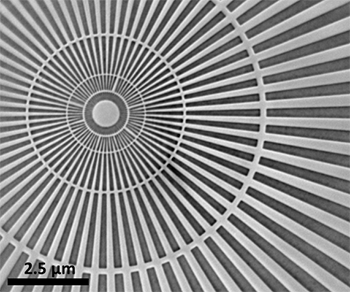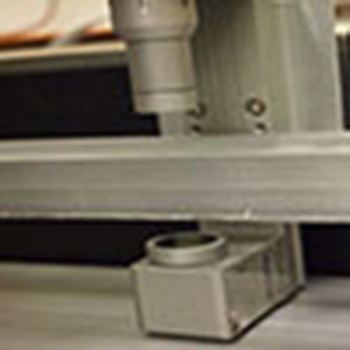X-RAY RUNS: Apply for Beamtime
2017 Nov 1 - Dec 21
2018 Feb 7 - Apr 3
2018 Proposal/BTR deadline: 12/1/17
2018 Apr 11 - Jun 4
2018 Proposal/BTR deadline: 2/1/18
Updates of CHESS single-bounce capillary development
Ellipsoid shaped single-bounce glass capillaries fabricated at CHESS have been used as achromatic X-ray focusing optics for various applications at synchrotron beamlines, such as microbeam X-ray fluorescence and tomography, confocal X-ray microscopy, microbeam small-angle X-ray scattering (µSAXS), microbeam high-resolution X-ray diffraction and standing wave technique, high pressure studies with diamond anvil cells, microbeam grazing-incidence wide-angle X-ray scattering (µGIWAXS), full-field transmission X-ray microscopy (TXM), X-ray emission spectroscopy and microcrystallography.
The most recent progress on applications with CHESS capillaries are related to capillary large numerical aperture and large acceptance, as explained in following two examples.
X-ray condenser for transmission X-ray microscope
A capillary is an excellent optical element to provide incoherent illumination in a transmission X-ray microscope (TXM) system using a Fresnel zone plate (FZP) as objective lens. The resolution of hard X-ray TXMs at synchrotron beamlines has improved with the availability of high-resolution FZPs (which is constrained by the outermost zone width). APS 32ID uses a high-resolution objective FZP based on the zone doubling technique, with an outermost zone width of 20 nm. Compared to a previous 40 nm FZP, the NA of the condenser must be doubled, increasing the full divergence from 3.5 mrad to 7 mrad. A CHESS 8 mrad full-divergence capillary has been provided to APS to match the 20 nm FZP, and the 30 nm structure of a test pattern can be easily resolved with this TXM setup (fig.1). On the other hand, many setups of TXM sample environment require large working distance between sample and optical elements. As part of the continuing collaboration between CHESS capillary group and APS imaging group lead by physicist Francesco De Carlo, CHESS capillaries with working distance as large as 100 mm has also been successfully used at APS newly developed TXM equipment.

Figure 1: The 30 nm fine structure of a test pattern can be easily resolved with the TXM setup with APS 20 nm outmost zone width FZP together with CHESS 8 mrad capillary condenser.
Miniature toroidal mirrors
The X-ray emission spectrometer developed by staff scientist Ken Finkelstein at CHESS C-line requires microbeam by focusing as much flux as possible. With source-to-sample distance of 14.5 m, the beam size at C-line sample is typically set to 1 mm (V) × 2 mm (H) using 1-to-1 vertical mirror focusing and horizontal slits. Special 280 mm long capillaries, with entrance diameter as large as 3.16 mm and working distance as large as 156 mm, are fabricated to increase the flux density at sample as well as enhance the energy resolution for analyzer-based X-ray emission spectroscopy applications by reducing the emitting source dimensions. Since capillary entrance ID is 3 times larger than X-ray vertical dimension and also slightly larger than its horizontal dimension, only part of the capillary, such as the bottom side inner surface, will be illuminated by X-rays. With that configuration, the capillary will be used in a very similar way as an X-ray toroidal mirror, except that the optical surface is in ellipsoidal shape which is better than the toroidal shape of a real X-ray toroidal mirror.

Figure 2: Research engineer Tom Szebenyi is ready to profile a 280 mm long capillary using a new optical micrometer setup which can provide both ID and OD profiles of a capillary.
In the near future, in addition to providing capillaries according to user’s requirement, we will keep upgrading the capillary puller for both smaller focusing capillaries approaching 1 µm and for large dimension capillaries accepting large incident beam, and keep improving metrology equipment for more accurate measurement of capillary profiles.
Submitted by: Rong Huang, CHESS, Cornell University
01/09/2014
